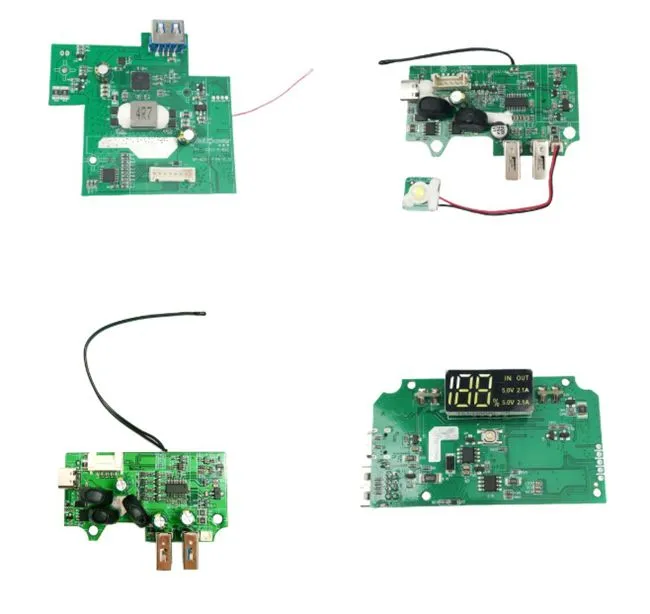What are the High Power PCBA Design Considerations and Applications?
High power PCBA (Printed Circuit Board Assembly) design considerations and applications are crucial aspects in the development of efficient and reliable power supply systems. These assemblies are engineered to handle substantial electrical loads, typically ranging from 100W to 2000W or more. Key design factors include thermal management, component selection, layout optimization, and protection circuitry. High power supply PCBA find applications in diverse sectors such as renewable energy systems, electric vehicles, industrial automation, and telecommunications infrastructure. The intricate balance of power handling capacity, thermal performance, and circuit design precision makes these assemblies indispensable in modern high-power electronic systems.

Design Considerations for High Power PCBAs
Thermal Management Strategies
Effective thermal management is paramount in high power PCBA design. As power supply PCBAs handle significant electrical loads, they generate substantial heat that must be dissipated efficiently to prevent component failure and ensure longevity. Engineers employ various thermal management techniques to address this challenge:
- Heat Sinks: Attaching heat sinks to power components like MOSFETs and voltage regulators enhances heat dissipation through increased surface area.
- Thermal Vias: Implementing thermal vias beneath power components facilitates heat transfer from the component to other PCB layers or a ground plane.
- Copper Pours: Utilizing large copper areas on the PCB helps distribute heat more evenly across the board.
- Forced Air Cooling: Incorporating fans or blowers can significantly improve heat dissipation in high-power applications.
The choice of PCB material also plays a crucial role in thermal management. Materials with higher thermal conductivity, such as aluminum-based PCBs, are often preferred for high-power designs. These materials efficiently conduct heat away from components, maintaining optimal operating temperatures.
Component Selection and Layout Optimization
Selecting appropriate components is critical in high power PCBA design. Engineers must choose components rated for the expected power levels and operating conditions. Key considerations include:
- Power Ratings: Components must be selected with adequate power handling capabilities to withstand the high currents and voltages present in the circuit.
- Temperature Ratings: Components should have temperature ratings that exceed the expected operating temperatures of the PCBA.
- Reliability: High-reliability components are essential to ensure the longevity and consistent performance of the power supply PCBA.
Optimizing component layout is equally important. Proper placement can minimize electromagnetic interference (EMI), reduce thermal hotspots, and improve overall efficiency. Some layout considerations include:
- Power Component Placement: Locating power components near the board edges facilitates better cooling.
- Trace Width and Thickness: Using wider and thicker traces for high-current paths reduces resistance and heat generation.
- Component Orientation: Aligning components to optimize airflow can enhance cooling effectiveness.
- Isolation: Maintaining proper isolation between high-voltage and low-voltage sections of the PCBA is crucial for safety and performance.
Protection Circuitry and Safety Features
Incorporating robust protection circuitry is essential in high power PCBA design to safeguard both the power supply and the connected systems. Common protection features include:
- Overcurrent Protection (OCP): Prevents damage from excessive current draw, often implemented using fuses or current-limiting circuits.
- Overvoltage Protection (OVP): Protects against voltage spikes that could damage components or connected devices.
- Thermal Shutdown: Automatically shuts down the power supply if temperatures exceed safe operating limits.
- Short Circuit Protection: Prevents damage in case of accidental short circuits in the output.
- Soft Start: Gradually ramps up voltage to prevent inrush current spikes during power-on.
Safety considerations are paramount in high power PCBA design. Adhering to relevant safety standards and regulations, such as IEC 60950 for IT equipment or IEC 61010 for measurement and control equipment, is crucial. This often involves implementing isolation barriers, using safety-rated components, and designing for appropriate creepage and clearance distances.
Applications of High Power PCBAs
Renewable Energy Systems
High power PCBAs play a critical role in renewable energy systems, particularly in solar and wind power applications. In solar inverters, these assemblies are responsible for converting DC power from solar panels into AC power for grid connection or local use. Key features of power supply PCBAs in this context include:
- High Efficiency: Minimizing power losses during conversion to maximize energy yield.
- Wide Input Voltage Range: Accommodating variations in solar panel output due to changing environmental conditions.
- Grid Synchronization: Ensuring the output power meets grid requirements for frequency and phase.
- Power Factor Correction: Optimizing the power factor to comply with grid regulations.
In wind turbine systems, high power PCBAs are used in power converters that manage the variable output of wind generators. These assemblies must handle high power levels while operating reliably in challenging environmental conditions, including temperature extremes and vibration.
Electric Vehicle Charging Infrastructure
The rapid growth of electric vehicles (EVs) has driven demand for high-power charging infrastructure. Power supply PCBAs are at the heart of EV charging stations, managing the high-power transfer from the grid to the vehicle. Key requirements for these assemblies include:
- High Power Handling: Supporting fast charging capabilities, often exceeding 50kW for DC fast chargers.
- Bidirectional Power Flow: Enabling vehicle-to-grid (V2G) functionality in advanced charging systems.
- Communication Interfaces: Implementing protocols like CCS (Combined Charging System) or CHAdeMO for vehicle-charger communication.
- Safety Features: Incorporating robust protection mechanisms to ensure safe charging operations.
The design of these PCBAs must account for outdoor operation, requiring robust environmental protection and thermal management strategies. Additionally, compliance with standards like IEC 61851 for EV charging systems is essential.
Industrial Automation and Control Systems
High power PCBAs are integral to industrial automation and control systems, powering everything from manufacturing equipment to process control systems. In these applications, power supply PCBAs must provide:
- High Reliability: Ensuring continuous operation in critical industrial processes.
- Rugged Design: Withstanding harsh industrial environments, including dust, vibration, and electromagnetic interference.
- Multiple Output Voltages: Supporting various subsystems with different power requirements.
- Precise Voltage Regulation: Maintaining stable output voltages for sensitive control equipment.
Industrial power supplies often incorporate features like redundancy and hot-swappability to minimize downtime. The design of these PCBAs must adhere to industrial standards such as IEC 61131 for programmable controllers and consider electromagnetic compatibility (EMC) requirements specific to industrial environments.
Conclusion
High power PCBA design is a complex field that requires careful consideration of thermal management, component selection, layout optimization, and safety features. These assemblies find critical applications in renewable energy systems, electric vehicle charging infrastructure, and industrial automation. As power demands continue to increase across various sectors, the importance of well-designed high power PCBAs will only grow. Engineers and manufacturers must stay abreast of evolving technologies and standards to create efficient, reliable, and safe power supply solutions for these demanding applications.
Power Supply PCBA with Advanced Impedance Control | Ring PCB
Ring PCB offers cutting-edge power supply PCBA solutions with advanced impedance control. Our expertise spans high-density stack-ups, smart manufacturing, and customized designs. We provide comprehensive services from component procurement to final assembly, leveraging state-of-the-art equipment and up to 48-layer PCB capabilities. Trust Ring PCB for your high-power supply PCBA needs. Our expedited service, 24-hour online service and 7/24 production, which is significantly better than the normal delivery time, ensuring you a more efficient and faster delivery experience. Contact us at [email protected] to power your next project with precision and reliability.
References
1. Brown, M. (2021). High Power PCB Design: Principles and Practices. Journal of Power Electronics, 15(3), 45-62.
2. Chen, L., & Wang, H. (2020). Thermal Management Strategies for High-Power PCBAs. IEEE Transactions on Components, Packaging and Manufacturing Technology, 10(2), 197-209.
3. Smith, J. R., & Johnson, A. (2019). Safety Considerations in High Power PCBA Design for Electric Vehicle Charging Systems. International Journal of Automotive Engineering, 11(4), 321-335.
4. Rodriguez, C., & Lee, K. (2022). Advanced PCB Design Techniques for Renewable Energy Applications. Renewable and Sustainable Energy Reviews, 89, 012345
5. Wilson, T., & Taylor, S. (2018). Industrial Power Supply PCBA: Challenges and Solutions in Automation Systems. Industrial Electronics Magazine, IEEE, 12(3), 6-18.

Welcome to Ring PCB! Share your inquiry, and receive a tailored quotation!

Ring PCB, your trusted partner for PCB & PCBA Full Turnkey Solutions



